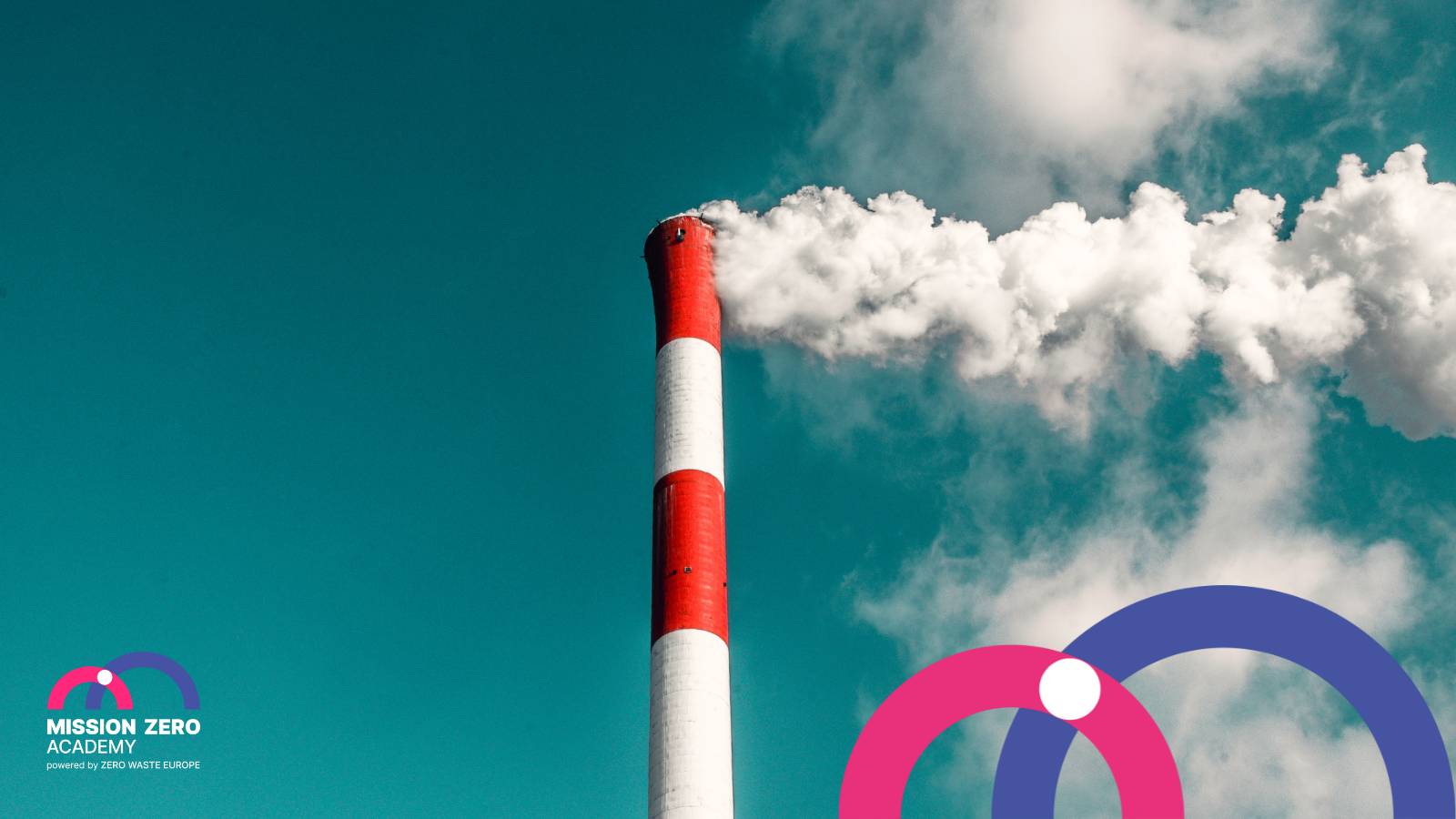Ahead of COP26 earlier this year, the European Union made a series of climate change proposals to reach its goal of becoming carbon-neutral by 2050. Part of the strategy to achieve this is the EU Emissions Trading System (ETS). Although the scope of the ETS was widened, emissions from Municipal Solid Waste Incineration are still not included in the European Commission proposal for the reform of the EU ETS, despite this sector emitting over 95 million tonnes of CO2 in 2018. If this proposal is adopted, it would slow the implementation of efficient solutions for waste prevention and cleaner energy in the fight against climate change.
What is an Emissions Trading System?
An ETS is a ‘cap and trade’ system in which a limit on the total amount of certain greenhouse gas emissions is set and reduced over time so that total emissions fall. Within the cap, governmental bodies buy and receive emissions allowances which they can trade with one another. Greenhouse gas emissions of the facilities are tracked, and the ability to manage these within limits is either rewarded or penalized. If emitters reach their limit, they must either cut back on their emissions or buy a permit from another emitter, who must then cut back.
This system allows for a transition time in which countries can make changes in, for example, legislation and waste policies to reduce emissions. Since its introduction in 2005, emissions from the European ETS sectors have been cut by around 43%.
Emissions from Municipal Solid Waste Incineration are rapidly increasing
Municipal Solid Waste Incinerators (MSWI) burn municipal or similar waste for energy. Currently, the inclusion of MSW incinerators in the ETS is entirely voluntary, despite a 300 per cent increase in MSW emissions over the past decade. This means that MSW incinerators are not subject to the ‘polluter pays’ principle, which results in an unpaid cost to society of around €1.3 billion per year.
To date, only two countries (Denmark and Sweden) have voluntarily included MSWI facilities. One reason that is often stated to exclude these facilities is that waste-to-energy provides a supposed solution to our growing waste problem while generating energy that is not derived from fossil fuels, such as coal.
This is, however, an overly simplistic view of this sector. In actual fact, in municipal incinerators, plastics make up a substantial portion of the waste. Plastic developed from petroleum is a fossil fuel with a proven record of contributing to climate change. Moreover, the electricity produced by MSW plants is more carbon-intensive than electricity generated through the conventional use of fossil fuels such as gas, which renders the reasons for not including these emissions in the ETS irrelevant.
Over 500 Municipal Solid Waste Incineration plants exist in Europe today, and more are planned or under construction. This means that CO2 emissions in this sector will continue to increase if appropriate policies are not in place or municipalities do not take action to limit them.
Benefits of including MSWI emissions in the European ETS
All sources of greenhouse gas emissions must be addressed if the EU is to achieve climate neutrality by 2050. A study by CE Delft requested by Zero Waste Europe shows that including incineration under the EU ETS would act as an incentive for waste prevention and recycling. By making these other waste prevention initiatives more competitive than incineration, the additional costs for these greener solutions will be offset in the long run. Since recycling is a labour-intensive process, it also has the potential to open up over 14,000 jobs by 2030.
Additionally, by reducing Municipal Solid Waste Incineration efforts, we can improve local air quality and correct the unfair competition with renewable energy solutions.
Calculating the impact of municipal waste policies
Even if MSWI is not (yet) included in the ETS, municipalities can already do their part to reduce emissions and transition to become carbon-neutral. By calculating the greenhouse gas emissions impacts from current and future waste policies, cities can prepare for the inevitable transition to increased legislation around carbon emissions, and accelerate their circular economy transition and zero waste implementation.
Municipalities can already prepare for the inevitable transition to increased legislation around carbon emissions.
GHG emissions are widely used to measure climate impact. They help bring the environmental aspect to the discussion alongside the social and economic implications when assessing the effects on communities. The MiZA Carbon Calculator is an easy-to-use excel-based software tailored for European Municipalities, with a unique focus on the root solutions of reducing waste emissions: prevention and reuse. The Calculator provides insightful data that will help make informed policy decisions and boost zero waste implementation in just a few steps.
By taking a closer look at the emissions of Municipal Solid Waste Incineration, instead of treating it as a quick fix to our waste problem, municipalities can take the lead in prioritizing the root solutions to reducing GHG emissions: increasing the responsibility of businesses and governments in the fight against climate change, by preventing waste instead of burning it.





